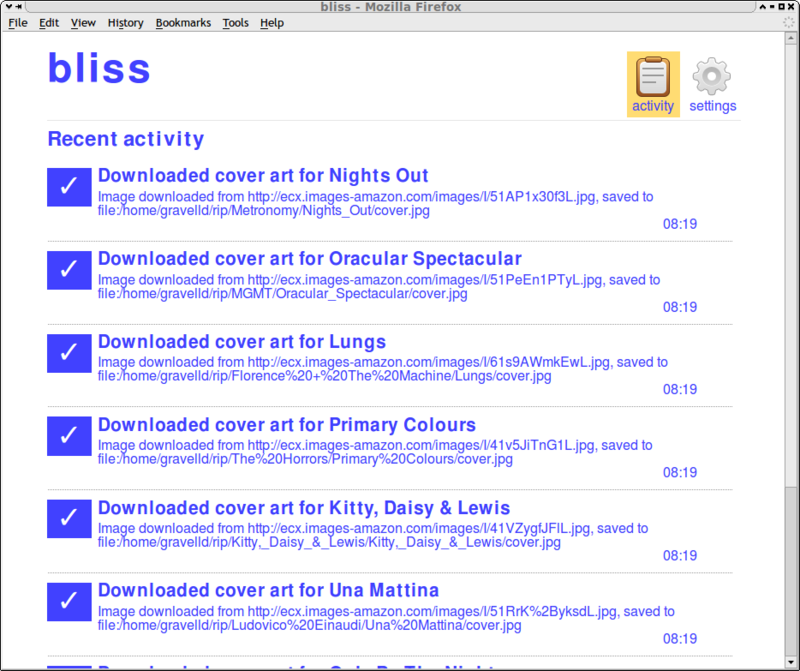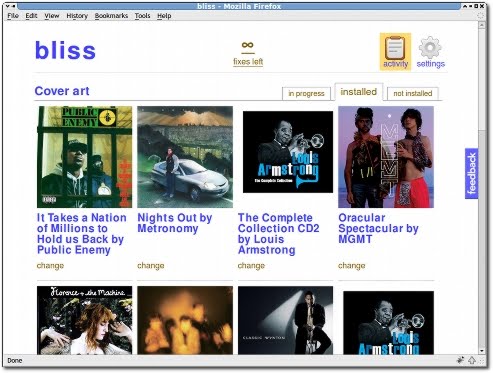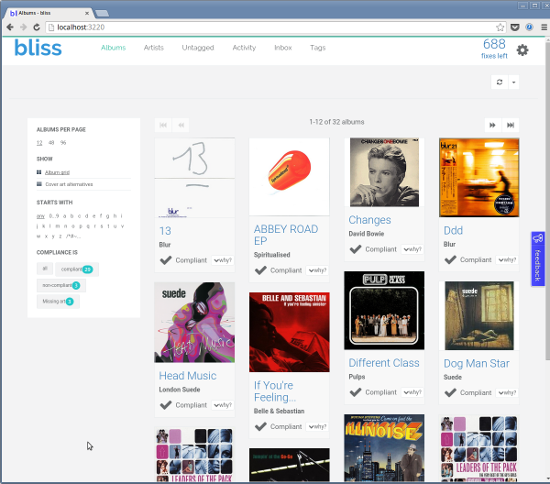Ten years old!
November 26, 2019 in bliss by Dan Gravell
 2019 was a landmark year for the bliss project; it turned ten years old!
2019 was a landmark year for the bliss project; it turned ten years old!
Development started in March 2009 and lasted eight months; the first sale came a couple of weeks later. Since then, we’ve gradually added features, improved UI and supported more and more devices.
Even though I’m constantly on the look out for new projects in home media management, bliss is still my “baby” and there are so many things I want to do!
First steps
Here’s how initial development panned out:
| 3rd March 2009 | First commit to version control. |
| 23rd September 2009 | First beta release. |
| 6th November 2009 | First full release. |
| 23rd November 2009 | First sale! |
It’s pretty surprising to me that development took eight months. In my head, it was more like eight weeks! I think there might have been breaks in there; I was juggling a full time job at the time.
I subscribe very much to the “if you’re not embarrassed by version one, you released too late” philosophy. Thus:

These very early versions didn’t even show the artwork that was downloaded. The first sales happened before we even showed the current artwork:

Growth, full time and new platforms
Sales were steady through early 2010, but then really picked up in late summer on the back of macOS support. At the time I was unhappy in my full time job, and so I grabbed the opportunity to move to full time as soon as bliss was “ramen profitable”.
From there, for the following five or six years, I introduced a number of improvements and supported additional devices.
| March 2011 | Genre consolidation. |
| December 2011 | Track number padding and acoustic fingerprinting |
| April 2012 | Added the online tag editor. |
| Late 2015, early 2016 | AIFF and WAV and DSF tagging. |
By August 2016, though, things appeared to have stagnated in terms of users and sales. At that point I decided on a refresh of bliss’s UI. This had a big effect, improving sales by 60% over the following months.

At the end of 2016 I changed the pricing structure, seeking to build a sustainable basis for future development.
In 2017 we brought official support for Synology and QNAP in-house.
This is the point at which I think bliss entered its “modern” phase, where we are now.
The future?
At this point, growth is fairly consistent year-on-year, and with a solid base in terms of user interface and a range of supported devices and platforms I hope this means we can get back to developing more features, support more devices and integrate with more services.
I’ve long wanted to implement ruleset selectors - I think this would be an extremely powerful feature.
Another focus will be to develop some of bliss’s tools for execution in the cloud. This doesn’t mean bliss will be running in the cloud, more it may be used to demonstrate what bliss can do for visitors to the site. Watch this space!
I’m very interested in how the self hosting revolution impact music listening. Are we looking at the development of a new model of music ownership? How about hybrid own stored/streaming services?
Here’s to another ten years!
Thanks to Adi Goldstein for the image above.

